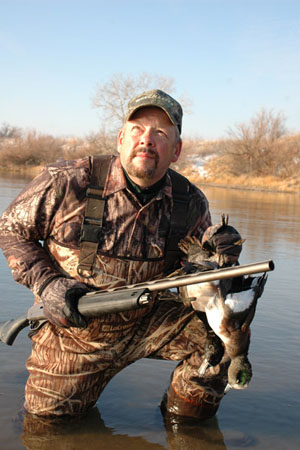 It all began innocently enough. In fact, it started with just two words — Peck’s Place.
It all began innocently enough. In fact, it started with just two words — Peck’s Place.
Peck’s Place was Eunice Peck’s farm, a wonderful 200-acre patch of goldenrod and switchgrass, red oak and multiflora rose, all of which served as home for ringneck pheasants, cottontails, bobwhite quail, whitetail deer, and a countless host of other wild things, big and small.
But Peck’s Place was not just graced with uplands, for in the back was a swamp. A tiny thing, not more than 40 feet across, and only half of that was open water, clear and devoid of obstacles so as to make it an inviting way-station for a passing mallard or two.
Or so we thought. As I remember it was late, and the morning flights at Wolfe’s Swamp were over. It was my father’s idea, this plan to hike into Peck’s Back Forty on the off chance a greenhead had decided to hide among the cockbirds and the whitetails.
One wood duck, a hen, was the first to jump. The fact my shots were futile was quickly forgotten as the sky above the damp spot turned black with ducks. Mallards, black ducks, wood ducks, teal — hundreds, no, thousands — each clawing for its own piece of atmosphere. In the confusion, all we could do was watch open-mouthed.
My father was the first to break the silence. “That was a duck or two, wasn’t it?” He always did have a way with understatements.
Later that day and for the remainder of the season, we returned to Peck’s Place. Not to walk through the briars, but instead wearing hip boots and camouflage coats. Over the years, we spent many a wonderful evening watching the sky above this insignificant little patch of water. And few were the afternoons when the slip-sliding mallards and the creaking wood ducks disappointed us.
 A pleasant story, perhaps, but there is a moral to these ramblings — little waters and ducks go together. And from the hunter’s standpoint, these tiny drops of duck-attractant can prove either as easy or as difficult to successfully work as the waterfowler wishes, a definite plus in these days of 100-decoy spreads, elaborate blinds and $20,000 aluminum duck skiffs.
A pleasant story, perhaps, but there is a moral to these ramblings — little waters and ducks go together. And from the hunter’s standpoint, these tiny drops of duck-attractant can prove either as easy or as difficult to successfully work as the waterfowler wishes, a definite plus in these days of 100-decoy spreads, elaborate blinds and $20,000 aluminum duck skiffs.
Little waters — what are they? Duck hunters from coast to coast each have their own definition of what constitutes a little bit of water. To the waterfowler accustomed to gunning brackish bays or endless tidal flats, small waters might be described as anything a hunter can see across in one look. A better definition, however, might be this. Little waters are those a hunter would normally not consider as huntable simply because they appear too small. Generally, these potholes are off the beaten path. Often, these wetlands cannot be seen from the road, and instead are discovered accidentally, by investigative waterfowlers not shy about asking questions of landowners, or by those willing to sit down with a good topographic map or computer mapping software.
But knowing what these little waters are and what they look like is only one variable in the grand scheme. The next question: Where? At the risk of being vague, these tiny gems are everywhere. From spring holes to hidden oxbows, seasonal damp spots in the corner of some forgotten field to a 20-by-20 puddle a mile from the last public hunting area sign, little waters are where one finds them.
Having uncovered the secrets of what and where, most waterfowlers turn their attention toward the third part of the puzzle: How?
Decoying little waters might, to some, seem too easy. Because the area in question is small, only a handful of decoys are usually needed. Often, hunters will offset these small numbers with the use of magnum decoys. Such blocks can be easily packed into hard-to-reach places, while their larger size makes for increased visibility. Out-of-the-way birds are often unpressured birds, accustomed to the security these small hiding places provide. The point here is decoy spreads, especially smaller arrangements during the latter part of the season, do not immediately translate into an avian version of “Danger — Hunter Below!”
For the strong of leg and lungs, little waters can be successfully worked by jump-shooting. Jump-shooters should remember, though, the more familiar one is with a waterway’s topographical design — the wide, slow-moving side pockets and favored loafing areas for instance — the better the chances of approaching birds in a quiet, stealthy manner. Here, time and research can pay off in feathered dividends.
Floating small waters can also hold exciting promise. In some cases, such waters can be accessed and navigated either with a lightweight car-topper or a canoe. In recent years, belly boats have become quite popular among the waterfowling crowd, and can in some situations place the hunter dead center in the middle of the action. Regardless of the style of watercraft employed, hunters should use caution and common sense even in small, shallow potholes as low water temperatures and cold November winds can quickly translate into hypothermia.
Small waters. Often overlooked by all but a handful of cagy waterfowlers, these tiny potholes, though diminutive, are often big on productivity. But be warned — these places are not for those who like to hunt their ducks in the company of others.






